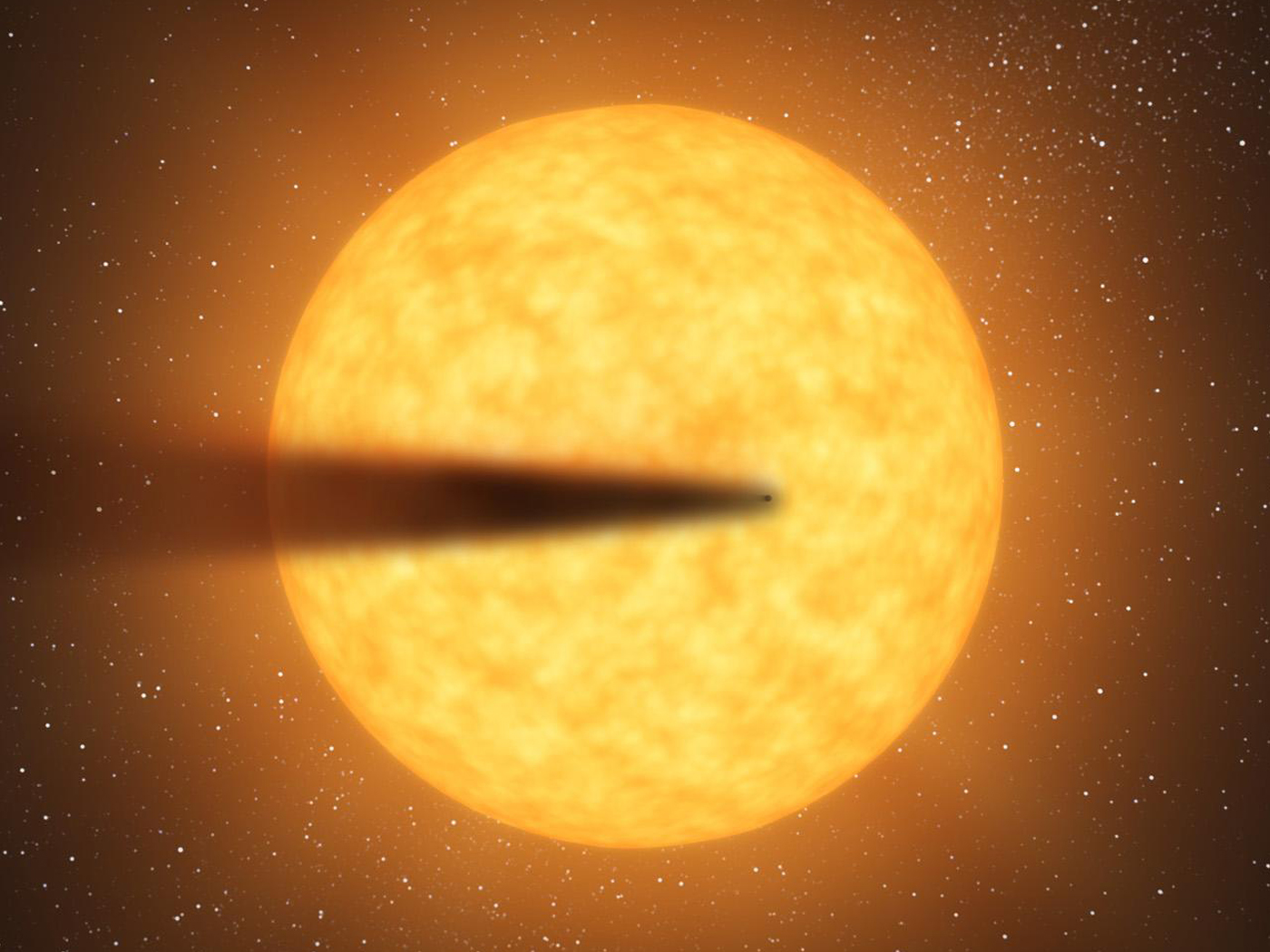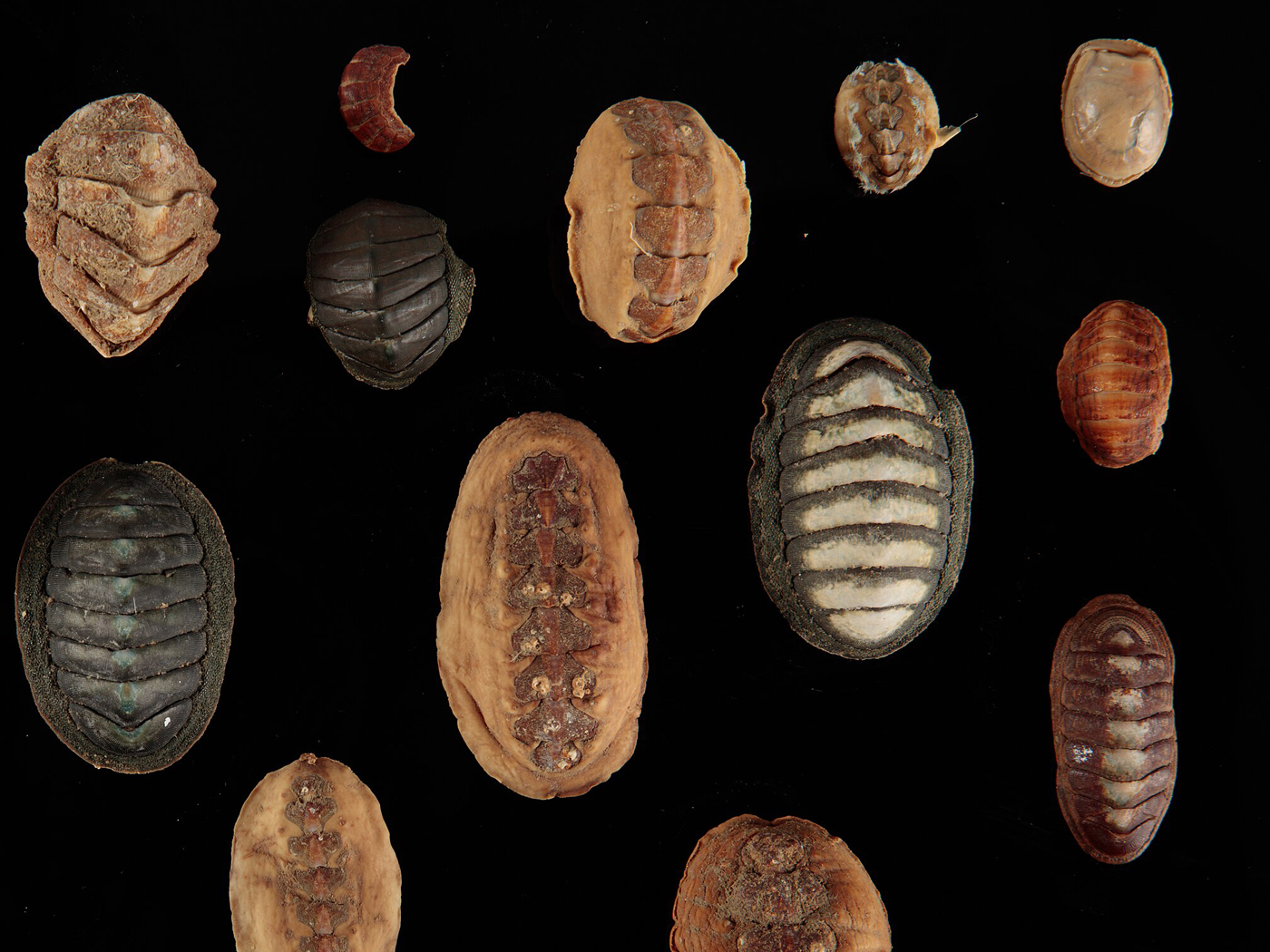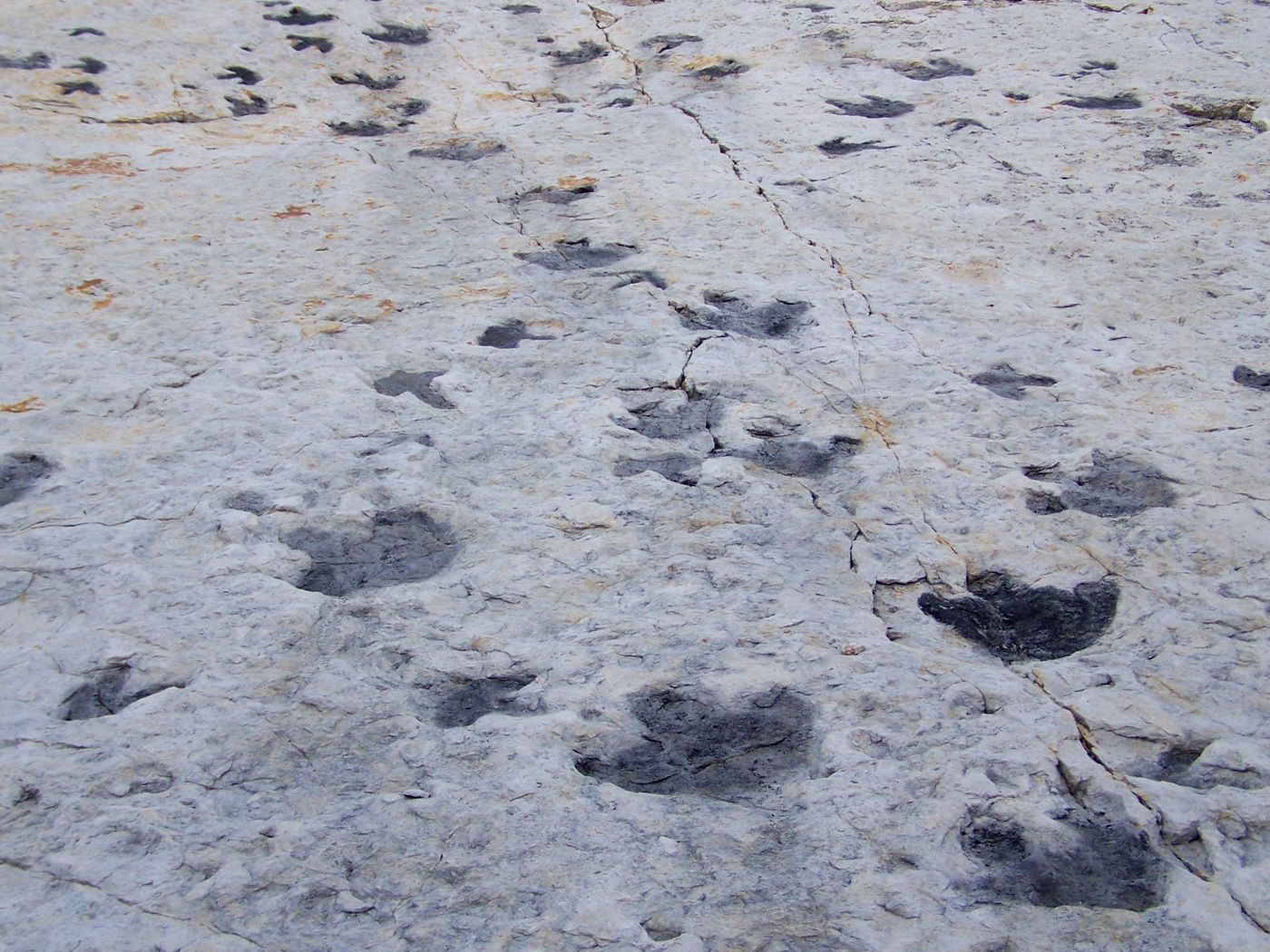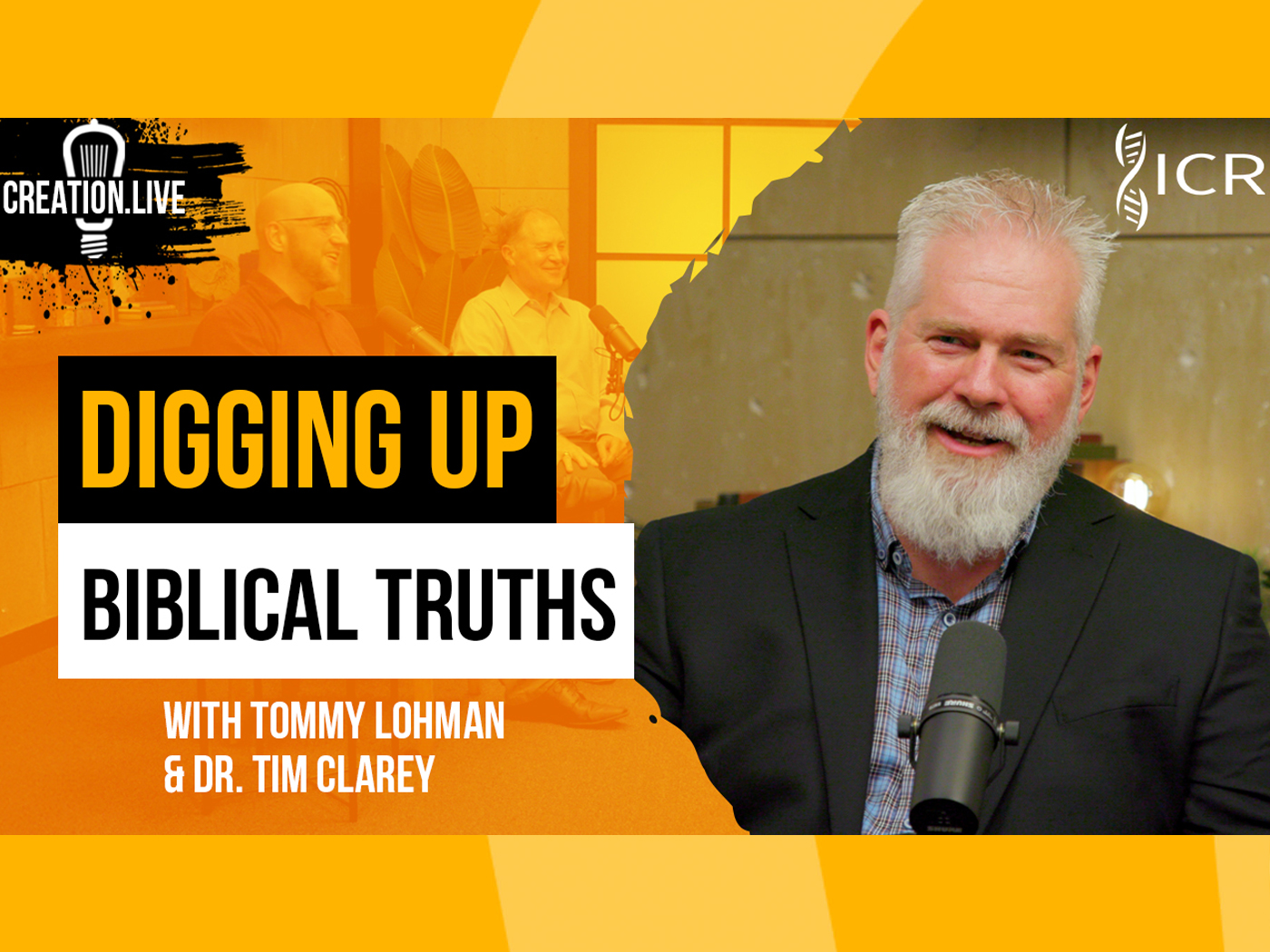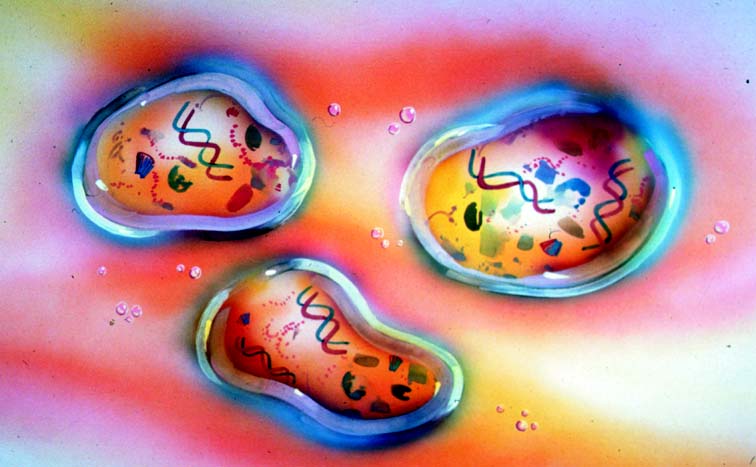 The ancient Greeks believed in the spontaneous generation of life. More recently, Louis Pasteur showed that life did not arise from non-living material. Yet those who deny the Creator's existence must believe it happened once upon a time. Evolutionists estimate the earth to be 4.6 billion years old and the earliest fossils about 3.8 billion years old. An initially hot Earth might take, say, 0.3 billion years to become "user friendly," so the first life took only about half a billion years to arrive from abiotic (non-living) starting materials. If it is as easy as just having the right conditions, one might think that life should have evolved many times before the advent of photosynthesis produced an oxygen concentration which made conditions unfavorable. Yet all life rides upon the same biomolecules, metabolic pathways, and genetic information, so life had but one origin, either created or evolved.
The ancient Greeks believed in the spontaneous generation of life. More recently, Louis Pasteur showed that life did not arise from non-living material. Yet those who deny the Creator's existence must believe it happened once upon a time. Evolutionists estimate the earth to be 4.6 billion years old and the earliest fossils about 3.8 billion years old. An initially hot Earth might take, say, 0.3 billion years to become "user friendly," so the first life took only about half a billion years to arrive from abiotic (non-living) starting materials. If it is as easy as just having the right conditions, one might think that life should have evolved many times before the advent of photosynthesis produced an oxygen concentration which made conditions unfavorable. Yet all life rides upon the same biomolecules, metabolic pathways, and genetic information, so life had but one origin, either created or evolved.
Modern theories of the origin of life date back to the Soviet scientist Oparin in 1924. His ideas of a Primeval Soup were promoted in the West by fellow communist J.D.S. Haldane of Cambridge. In 1953 Urey & Miller published results of some simple experiments in organic chemistry which seemed to lend credence to the soup theory. Interestingly, forty years later, Miller admitted that the question of the origin of life is much more difficult than he, or anyone else, had thought. Clutching at straws, others have suggested mid-ocean ridges (with their cocktail of hot chemicals) as the cradle of life, while others have postulated an extraterrestrial seeding of the Earth. This latter suggestion still does not offer a mechanism for abiogenesis.
With the development of molecular biology since the time of Oparin and Haldane, the cell is no longer regarded as simple. The living plasma membrane allows in or out only specific compounds. It is not simply a semi-permeable membrane. Cells contain nucleic acids that carry information about the structure and functions of the organism. They also contain ribosomes where proteins are made using a complex mechanism of nucleic acids and more than a hundred different proteins, each with a specific task. The cell also contains mitochondria where energy (ATP) is produced. The complexity of all these parts of the cell is enormous. Lynn Margulis has suggested that the first proto-cell assimilated these organelles by a process of symbiosis. However, these components cannot now exist independently, nor could the cell exist without their contributions. Moreover, one such type of organelle, known as a lysosome, contains enzymes whose function is to digest foreign bodies. With all the amazingly complex, mutually-dependent components, it seems that the cell had to be complete from the beginning, rather than being assembled piecemeal over years of evolution.
The major biochemicals in living cells are proteins and nucleic acids. No biologically significant proteins or nucleic acids have been made by any experiments such as those of Miller or those who have followed him.
Proteins are strings of amino acids whose enzymatic activities arise from active groups within a specific three-dimensional shape. These are due to a precise sequence of the amino acids. There are twenty amino acids found in proteins, although many others exist that are not used in metabolic pathways. Chemically they are NH2CH(R)COOH, where R is H in the simplest case, glycine, but can also be a variety of organic groups such as CH3 in alanine. In all amino acids except glycine, the central carbon is surrounded by a tetrahedron of four different groups, H, R, amine and carboxylic acid. Because of this asymmetry, amino acids exist in two forms, designated right- and left-handed (or d and l, or R and S). In proteins (a string of amino acids—NHCH(R)CONHCH(R¢)CO&mda
In laboratory experiments aimed at simulating conditions on a lifeless Earth, a messy mixture of amino acids can be formed, consisting of mostly glycine and d/l-alanine. Not all amino acids found in proteins can be synthesized in this manner, while many not used by living systems do result from these experiments. A product consisting of exclusively left-handed amino acids never results, and from theoretical considerations cannot result. Only d/l racemic mixtures are formed. Peptization, the joining of the amino acids to form a protein by the elimination of water, is difficult to accomplish by non-biological means. Proteinoids are unstable in the presence of water. Since they cannot replicate themselves, natural selection cannot be a driving force in their improvement. The precise order of amino acids in proteins in cells is governed by information on the nucleic acids that code for them, so this could not be achieved by chance. Moreover, the tar-like by-products would tend to poison any enzymatic activity in proteins.
Nucleic acids are found in living cells as DNA, ribosomal-RNA, messenger-RNA and transfer-RNA, each with specific properties. They consist of strings of nucleotides, which are composed of a nitrogenous base, a sugar and a phosphate linkage. DNA carries the genetic information for the organism while RNA is used in protein synthesis. There are four different bases on the double-stranded DNA. The strands are linked by weak hydrogen bonds between bases on each strand. The structure of the bases is such that each in one strand only links with one other type of base in the other strand. One single strand of DNA therefore acts as a template for the other strand during cell replication. Three consecutive bases act as a codon to transfer information to specify a particular amino acid, or to start or stop a sequence. This information on a string of DNA (gene) is responsible for the formation of a particular protein. Since there are four bases, there are sixty-four codons (43), which pass information rather like the letters and punctuation of a written message. This is a precise mechanism. Information transfer is checked at a rapid rate by proteins for random changes, known as mutations, which lose information. No mutation could lead to an increase of information, so neo-Darwinism cannot be a mechanism for macroevolution. It is a tenet of Information Theory that information only comes from an intelligent source, so genetic information must have been created. Information not only implies meaning, but purpose. This is the opposite of chance. As a carrier of information the DNA molecule is 4.5x1013 (45 trillion) times more efficient than the silicon megachip, which was made by teams of designers. Incidentally, a stereo-chemical basis for the relationship between any particular three nucleotides and the amino acid for which they code has not yet been elucidated.
When nucleotides are joined in the laboratory, thermodynamic considerations allow one particular site for bonding phosphate to sugar to the next phosphate. However, such a pseudo-DNA strand is not biologically useful. The bonding site found in DNA, the 3¢ and 5¢ carbons of ribose, is in the best position because the proteins used to join it together act as templates to get the junction across the sugar right. The sugars, deoxyribose in DNA, and ribose in RNA, are also chiral like the amino acids, but in this case the sugars are all right-handed. Again, there is no conceivable mechanism for arranging this by chance.
Urey and Miller had to assume, contrary to the opinions of geologists, that the early Earth had no oxygen in its atmosphere. This is because amino acids are destroyed by oxygen. But absence of oxygen implies absence of ozone, another form of oxygen. Ozone in our atmosphere protects us from high energy ultra-violet rays from the Sun. Nucleic acids are rapidly decomposed by UV light. A further difficulty for those who postulate abiogenic synthesis is that the molecules formed are destroyed by the very conditions (such as heat, UV light and electricity) that make them. Proteins and polynucleotides are thermodynamically unstable. They are also unstable with regard to hydrolysis and reactions with other simple reagents. Moreover, the longer the experiment is allowed to continue, the more decomposition products are made. Many processes are reversible, and in the equilibrium state simpler starting materials predominate over more complex products. Time does not help the forward reaction. The tarry messes from these experiments are in stark contrast to the neat metabolic pathways of living cells with their clean, high yields of precisely fashioned products. In their experiments to simulate abiogenic development, investigators begin each stage with pure compounds in high concentrations. This can hardly reflect natural conditions on a prebiotic Earth.
In the living cell, the DNA codes for proteins and the DNA is itself constructed using proteins. It is a chicken and egg situation. It has been suggested that RNA possesses some of the enzymatic properties of proteins while having the information carrying ability of DNA. Could positing a first proto-cell that relied on RNA for both functions, solve the problem? No primeval soup experiment has ever produced anything resembling RNA. RNA does not replicate itself, a prime necessity for a living cell. RNA's enzymatic properties are not sufficiently versatile for even the simplest imaginable proto-cell. The problem of the origin of information on the information carrying RNA remains unsolved. A proto-cell based solely on proteins is equally impossible, since proteins lack the ability to reproduce themselves.
Each component of a living cell is breathtakingly complex, yet in isolation it cannot survive nor replicate itself. All the parts of the cell are necessary to its functioning and replication. Nothing works until everything works. This has been called irreducible complexity. Even small parts of the components of cells can be unimaginably complex. An example of this is the enzyme adenosine triphosphate synthase, found in all living cells including animals, plants, fungi and bacteria. The elucidation of the structure of ATP synthase won a 1997 Nobel Prize. Every cell contains hundreds of these miniature motors embedded in the surfaces of the mitochondria. Each is 200,000 times smaller than a pinhead. The motor forges a bond between ADP and phosphate to form ATP. The ATP couples with other processes in the cell requiring energy to reform ADP and phosphate. So energy is directed to contract muscles, beat the heart and drive thought processes in the brain, while the products are recycled. At the centre of ATP synthase is a tiny wheel that turns at about 100 revolutions per second and turns out three ATP molecules per rotation. Just to keep us thinking and walking, humans must recycle their own body weight of ATP each day. Each enzyme is composed of thirty-one separate proteins that in turn are made of thousands of precisely arranged amino acids. Take away any one of the 31 proteins and the motor is useless. It could not have evolved. And consider this: the genetic information and RNA plus proteins needed to construct the ATP synthase are in total even more irreducibly complex than the ATP synthase itself. (A car-making factory is more complex than a car.)
The concept of abiogenesis is vital to the atheistic evolutionist. It follows in their thinking that if life can arise spontaneously under the right conditions, then there will be perhaps millions of planets in the Universe where life already exists. In some of these places intelligent life may have evolved. These ideas have spawned a large body of literature, films and video games involving imaginary extraterrestrial life. Billions of dollars have been spent by government sponsored searches for messages from out there (e.g., project SETI). The irony is that evolutionists would recognize that a nonrandom signal from space that carried information with meaning and purpose must have come from an intelligent extraterrestrial. Yet they consider nucleic acids in the living cell, a nonrandom sequence of nucleotides carrying far more information with precise meaning and exquisite purpose, and say it must have arrived by chance!
* Dr. Rosevear is Director of the Creation Science Movement in England.







